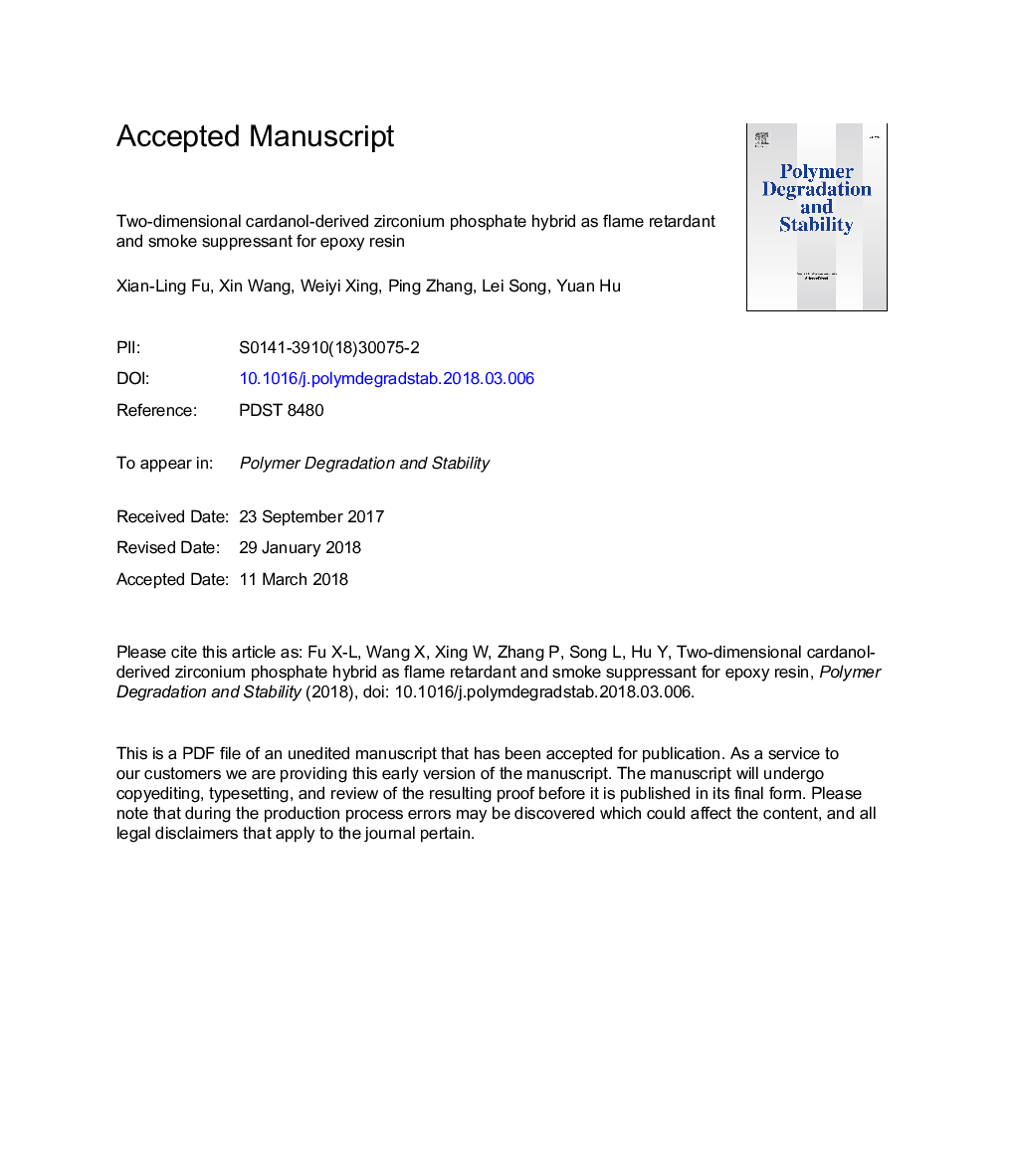| Article ID | Journal | Published Year | Pages | File Type |
|---|---|---|---|---|
| 7824086 | Polymer Degradation and Stability | 2018 | 42 Pages |
Abstract
A new hybrid cardanol-derived zirconium phosphate (CZrP) was successfully synthesized from renewable resource cardanol and its structure was well characterized by nuclear magnetic resonance (NMR), X-ray diffraction (XRD) and scanning electron microscopy (SEM). As a comparison, EP composite containing zirconium phosphate (ZrP) was also prepared using the same procedure. XRD result demonstrated that CZrP displayed more than 5-fold interlayer spacing than pristine ZrP. As a result, the enlarged interlayer spacing of CZrP facilitated the homogeneous dispersion of the nanoadditive in the epoxy matrix. With only 6â¯wt % of CZrP, the peak heat release rate, total heat release, and total smoke production values of the resultant epoxy composite were decreased by 42%, 21%, and 26%, respectively, in contrast to those of virgin EP. The suppressed fire hazards of epoxy composites were attributed to the physical barrier effect induced by the two-dimensional morphology of CZrP. In comparison, the efficiency of pristine ZrP was not as high as CZrP in terms of the reduced PHRR, THR, and TSP in the cone calorimetry test. Furthermore, the tensile strength and the elongation at break were enhanced simultaneously due to the reinforcing effect of inorganic platelet and the plasticizing effect of long alkyl chains in this unique hybrid.
Related Topics
Physical Sciences and Engineering
Chemistry
Organic Chemistry
Authors
Xian-Ling Fu, Xin Wang, Weiyi Xing, Ping Zhang, Lei Song, Yuan Hu,
